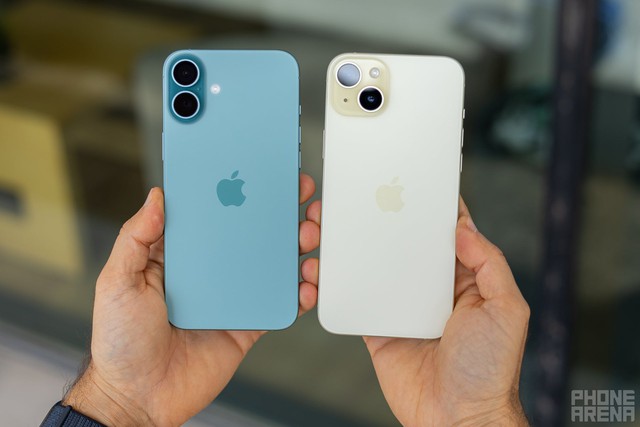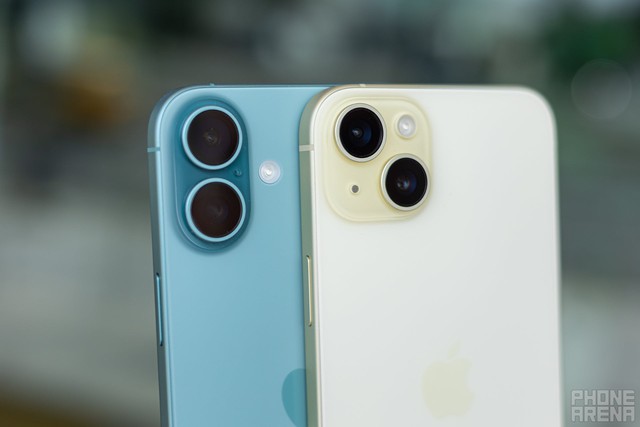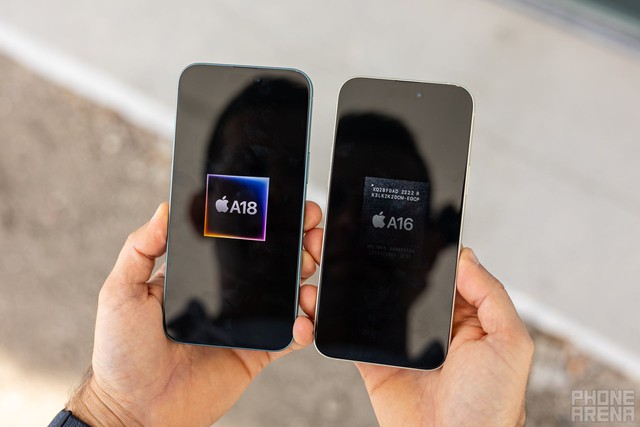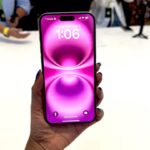iPhone 15 Plus and iPhone 16 Plus: A Dynamic Duo
With the release of the iPhone 16 Plus, many will consider the iPhone 15 Plus a sensible choice for year-end shopping. After all, this one-year-old model doesn’t fall short of the latest iPhones while saving you a few million dong.
Holding them side by side, it’s hard to tell the iPhone 16 Plus and iPhone 15 Plus apart unless you turn them around. They both feature a 6.7-inch identical screen with a pill-shaped camera and Dynamic Island.

The newer model’s camera bump is designed vertically and shares some similarities with the iPhone X camera. In contrast, the iPhone 15 Plus sports a traditional square camera design with the main and ultra-wide cameras placed diagonally.
The materials used in both phones are almost identical, featuring the same glass-aluminum construction as the previous few generations of iPhones.
There’s another design change in the newer model regarding the button layout. The iPhone 16 Plus comes with an Action Button and Capacitive Camera Control buttons. The older model only has a silent switch, along with the usual power and volume buttons.
The iPhone 16 Plus is equipped with the new A18 chipset, manufactured using 3nm technology, improving power efficiency by 20% over the A17. This new model also gets a RAM boost to cater to higher AI demands.
Nonetheless, the iPhone 15 Plus is no slouch with its A16 chip and will perform well with 6GB of RAM. While the iPhone 16 Plus clearly wins in terms of raw power, you won’t notice any difference in daily tasks, especially with Apple’s optimization of apps for iOS to provide a smooth experience regardless of hardware.
Design aside, the iPhone 15 Plus retains the camera system of its successor, featuring a 48MP main camera paired with a 12MP ultra-wide lens.

The repositioned camera on the new model allows the iPhone 16 Plus to shoot landscape videos in horizontal mode, expected to be viewed on the Apple Vision Pro – which is yet to gain traction.
There’s a slight hardware change when it comes to the ultra-wide camera of the iPhone 16 Plus. The newer model has an aperture of f/2.2, a tad higher than the f/2.4 of its predecessor. Lastly, a Pro feature on the iPhone 16 Plus camera is the ability to shoot macro close-ups.
When comparing the cameras of the iPhone 15 Plus and iPhone 16 Plus, Phone Arena concluded that the difference in image quality between the two is minimal. Both capture plenty of detail with excellent dynamic range and exposure. There’s a slight variation in white balance, with the iPhone 16 Plus tending to produce warmer photos.
A Cost-Effective Solution
The iPhone 15 Plus comes with a relatively large 4,383 mAh battery (at least for iPhones), and the iPhone 16 Plus is said to have a capacity of around 4,674 mAh, which is 6.6% higher.
Despite the 300 mAh increase in capacity, once again, there’s no clear winner in terms of battery life. The new model performs better in web browsing tests but falls short in video streaming and gaming.

Charging capabilities remain unchanged, as both support fast wired charging up to 26W.
Considering the above, it’s evident that the difference between these two products in terms of overall user experience is not significant. The camera system, battery, and charging capabilities are similar.
The most substantial differences lie in the hardware and software – the iPhone 16 Plus is based on the newer A18 chipset, a powerhouse compared to the A16 Bionic, along with enhanced AI capabilities. Additionally, the Action and Camera Control buttons have been criticized as insignificant in daily use contexts.
Once again, Apple has retained the 60Hz refresh rate on both models – a feature that might be a deciding factor for some.
With a price difference of around 3 million dong, the iPhone 15 Plus remains a solid choice considering the value it offers compared to the upgraded iPhone 16 Plus. The most notable differences are the new buttons and AI features, which will take a long time for Apple to fully realize.
The Alluring iPhone 16: A Surprise Surge in Pre-Orders
The iPhone 16 series saw a slight dip in pre-order numbers compared to its predecessor, the iPhone 15. However, one model stood out with a remarkable 48% increase in pre-orders, and surprisingly, it wasn’t the Pro Max variant.









































